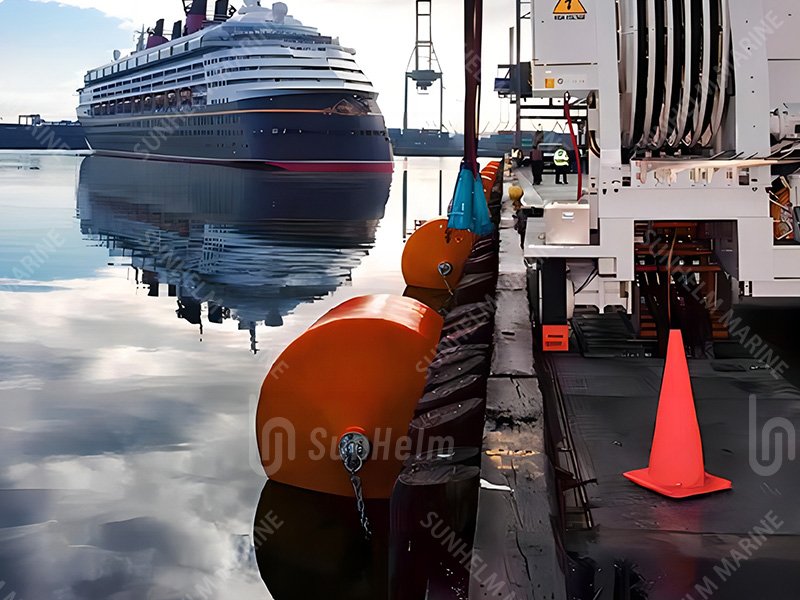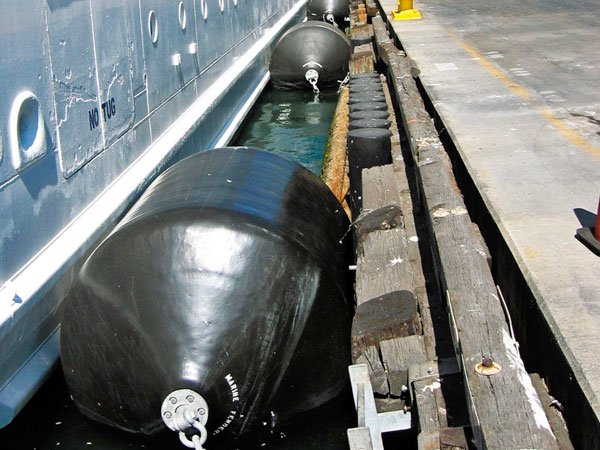Protecting vessels and docks from the harsh realities of marine environments is more critical than ever. Whether it’s a cruise ship docking in a bustling port or a cargo vessel navigating rough seas, the risk of damage during berthing is ever-present. Traditional rubber fenders have served their purpose, but with advancements in materials and technology, foam-filled fenders have emerged as a superior alternative. These fenders offer enhanced durability, reduced maintenance, and increased safety, making them a preferred choice for modern maritime operations.

What Are Foam-Filled Fenders?
Foam-filled fenders are marine safety devices designed to absorb the kinetic energy of a vessel during berthing. They consist of a closed-cell foam core encased in a tough, abrasion-resistant outer skin, typically made of polyurethane (PU) or polyurea. This construction ensures that the fender remains buoyant and functional, even if the outer skin is damaged. Unlike pneumatic fenders, foam-filled fender do not require air pressure, eliminating the risk of deflation or bursting.
Key Components of Foam-Filled Fender
1. Closed-Cell Foam Core
The heart of foam-filled fender is the closed-cell foam core. This structure prevents water ingress, ensuring that the fender remains unsinkable even if punctured. The foam’s closed-cell nature also provides excellent energy absorption, distributing the impact forces evenly across the fender’s surface.
2. Polyurethane or Polyurea Skin
The outer skin of the fender is made from reinforced polyurethane or polyurea. This tough elastomeric layer provides resistance against UV rays, seawater, and physical abrasion. Additionally, the skin can be coated with materials like polyurea to enhance elasticity and corrosion resistance, as seen in Sunhelm’s EVA solid polyurea floating fenders .
3. Reinforced Layers
To further bolster the fender’s durability, reinforced cord layers are often integrated between the foam core and the outer skin. These layers add structural integrity, allowing the fender to withstand higher impact forces without compromising performance.
Why Choose Foam-Filled Fenders?
Foam-filled fender offer several advantages over traditional rubber fenders:
- Unsinkable Design: Even if the outer skin is damaged, the closed-cell foam core ensures the fender remains buoyant and functional.
- Low Maintenance: Without the need for air pressure, there’s no risk of deflation, reducing maintenance requirements.
- Enhanced Durability: The tough outer skin and reinforced layers provide resistance against environmental factors and physical wear.
- Environmental Safety: Materials like EVA foam and polyurea coatings are environmentally friendly and have a longer lifespan.
Sunhelm’s Foam-Filled Fenders
Sunhelm Marine specializes in high-quality foam-filled fender designed to meet the demanding needs of the maritime industry. Their fenders feature EVA foam cores and polyurea coatings, ensuring durability and environmental safety. Sunhelm’s fenders are also customizable, allowing for adjustments in foam grades to meet specific berthing energy and reaction force requirements.
People Also Ask
Q1: Are foam-filled fenders suitable for all types of vessels?
A1: Yes, foam-filled fender are versatile and can be used for various vessels, including cargo ships, cruise liners, and naval ships.
Q2: How do foam-filled fenders compare to pneumatic fenders?
A2: Foam fenders are unsinkable and require less maintenance than pneumatic fenders, which rely on air pressure and can be prone to punctures.
Q3: Can foam fenders be repaired if damaged?
A3: Yes, minor damages can be repaired, and the closed-cell foam core ensures the fender remains functional even if the outer skin is compromised.
In conclusion, foam-filled fenders represent a significant advancement in marine safety technology. Their robust design, low maintenance requirements, and environmental benefits make them a smart investment for any maritime operation. For those seeking reliable and durable fendering solutions, Sunhelm Marine offers products that meet the highest industry standards.


